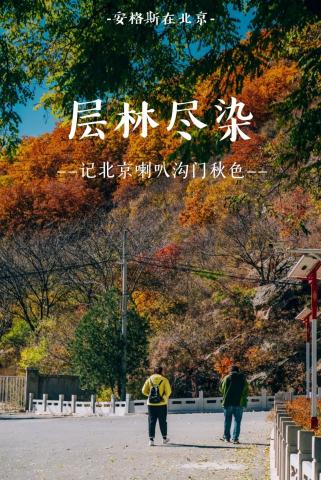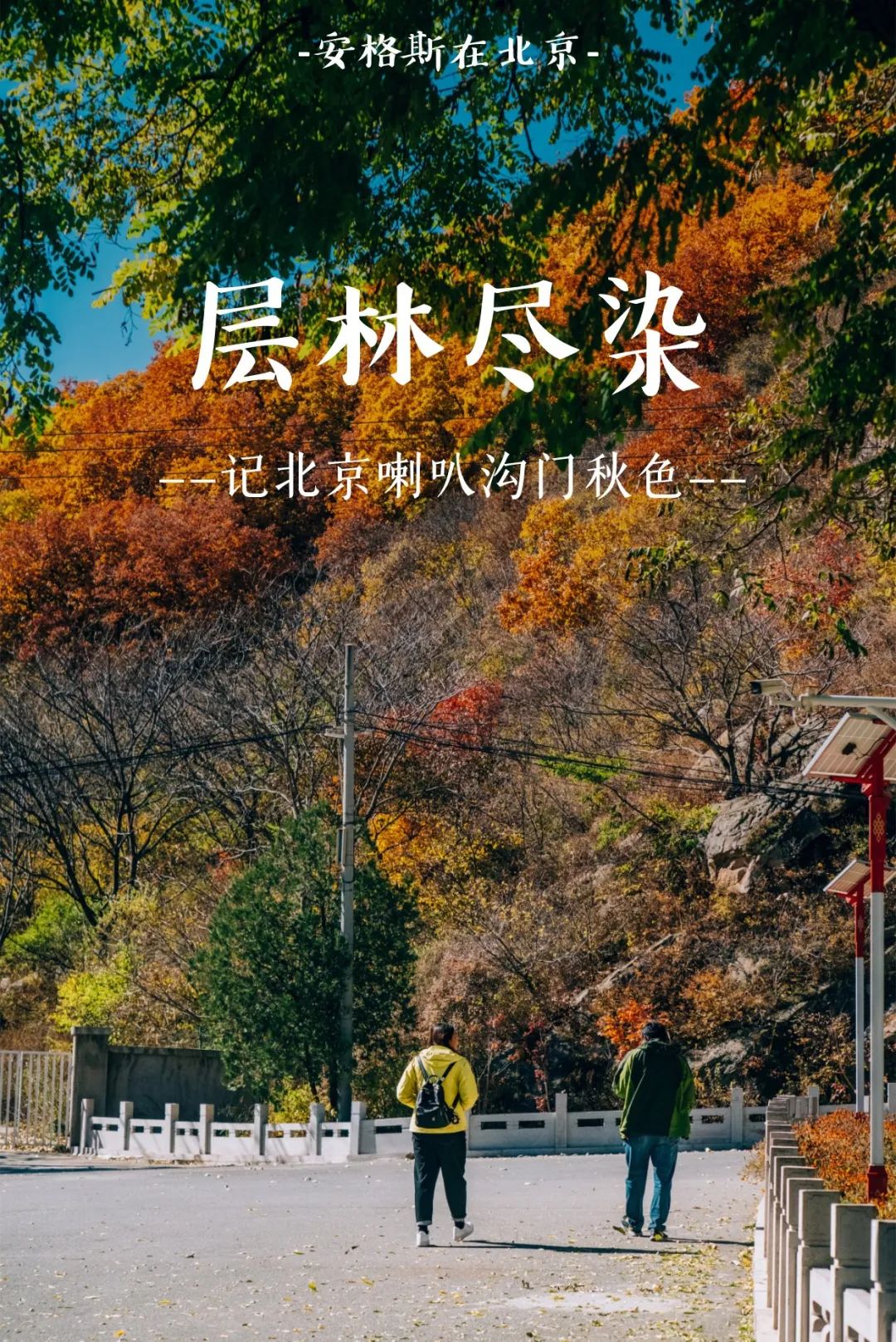Look at the mountains covered with red and the forests all dyed - "Qinyuanchun·Changsha" | Mao ZedongIn the autumn of 1925, the great leader Comrade Mao Zedong wrote the famous song "Qinyuanchun·Changsha" in Changsha. The autumn scene described in the poem is unimaginable for me, who has lived in the Chengdu Plain since I was a child: the distant mountains are still lush in autumn, do the mountains and rivers have other colors?In the first autumn after I came to work in Beijing, I finally experienced that wonderful scene in the mountains of Beijing: Yes, I went to Xiaohangoumen.Many people call this place Trumpet Valley, but its correct name is actually Trumpet Valley Gate.In the old days, it was customary to dig a trench in front of the military camp. The trench gate actually means the gate of the military camp. This is a very interesting cultural symbol. In the mountainous areas north of Beijing, words such as "Goumen", "Ying" and "Yingzi" exist in many place names.Looking at the Great Wall not far away, we can imagine that hundreds of years ago, this place should have been a border defense outpost with flags everywhere. ↑The red leaves on the cliff should mainly be oak treesThe most important scenic spot in the Diaogoumen area is Diaogou Primitive Forest Park, which is also a good leisure-level hiking route.
↑The red leaves on the cliff should mainly be oak treesThe most important scenic spot in the Diaogoumen area is Diaogou Primitive Forest Park, which is also a good leisure-level hiking route. ↑Hiking in the autumn colorsWe took the main road in the scenic spot: White Birch Forest Viewing Route . If we didn’t take the shuttle bus, the whole trip would be about 11 kilometers round trip and climb about 800 meters.↑The whole journey is on gravel roads, which is relatively easy to walk.If you want to take a shuttle bus, the walking distance will be shortened to about 6 kilometers, which is a suitable option for traveling with children and the elderly. Because the scenery along the shuttle bus is also very good and the distance is not far, it is highly recommended to walk to enjoy the autumn at a closer distance.↑Shuttle bus route (left) and walking route (right)There are two main destinations on the main road: the birch forest and the maple leaf forest. Maybe the red leaves in the maple leaf forest have ended. The most impressive thing about this trip is the white birch forest. It feels like you are in the world of oil painting: it really is. So beautiful!
↑Hiking in the autumn colorsWe took the main road in the scenic spot: White Birch Forest Viewing Route . If we didn’t take the shuttle bus, the whole trip would be about 11 kilometers round trip and climb about 800 meters.↑The whole journey is on gravel roads, which is relatively easy to walk.If you want to take a shuttle bus, the walking distance will be shortened to about 6 kilometers, which is a suitable option for traveling with children and the elderly. Because the scenery along the shuttle bus is also very good and the distance is not far, it is highly recommended to walk to enjoy the autumn at a closer distance.↑Shuttle bus route (left) and walking route (right)There are two main destinations on the main road: the birch forest and the maple leaf forest. Maybe the red leaves in the maple leaf forest have ended. The most impressive thing about this trip is the white birch forest. It feels like you are in the world of oil painting: it really is. So beautiful!

 The main components of red leaves are maple leaves, oak trees, poplar trees, birch trees, etc. Most of the red leaves have come to an end at this time, laying a thick carpet on the hillside.Looking at the fallen leaves all over the ground, I can't help but think of Gong Zizhen's words: "Fallen flowers are not heartless things, into Chunni more quadrangle". I believe that when the ice and snow melt in March next year, the fallen leaves will present a completely different scene.↑Falled leaves and dead trees on the side of the hillside↑The red leaves shine golden in the sun↑On the mountain road in autumn
The main components of red leaves are maple leaves, oak trees, poplar trees, birch trees, etc. Most of the red leaves have come to an end at this time, laying a thick carpet on the hillside.Looking at the fallen leaves all over the ground, I can't help but think of Gong Zizhen's words: "Fallen flowers are not heartless things, into Chunni more quadrangle". I believe that when the ice and snow melt in March next year, the fallen leaves will present a completely different scene.↑Falled leaves and dead trees on the side of the hillside↑The red leaves shine golden in the sun↑On the mountain road in autumn
↑Little birds jumping around in the woods↑Taste a cup of autumn teaSeptember to October every year is the golden time to enjoy autumn in Laogoumen.However, due to the sudden drop in temperature, you may miss most of the red leaves if you go to Daogoumen in late October. If you want to go there, it is highly recommended to stop by Baihe Bay Canyon on the way, either to rest and recuperate, or to camp and fish. The scenery is not inferior to that of Laogoumen.↑Autumn scenery of Baihewan Canyon Diaogou Primitive Forest Park:
- Opening hours:7:30-17:30 (the park closes 30 minutes later on weekends and holidays)
- Ticket information: 38/person
- Recommended route: Gate > Walk up the mountain > Birch forest > Maple leaf forest > Descend the mountain
- Route information: The total walking distance is about 11km, and the one-way shuttle distance is 2.5km.
- Surrounding places: Baihe Bay, Wulongtan
*Note: You will pass through a checkpoint on your return journey, and you may receive a text message reminder for nucleic acid testing twice in three days. It is recommended to take a nucleic acid test within 24 hours after returning to Beijing.



 ↑The red leaves on the cliff should mainly be oak trees
↑The red leaves on the cliff should mainly be oak trees ↑Hiking in the autumn colors
↑Hiking in the autumn colors



















